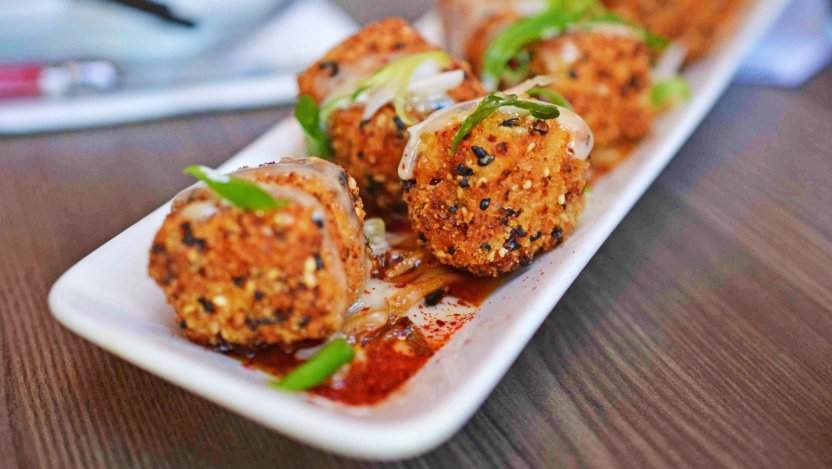We’ve been taught to look for hidden gems and hole-in-the-wall restaurants if we want authenticity in Asian food, but a group of chefs, proficient in their native cuisine as well as a range of techniques from the East to the West, are proving that elevated and modern Asian cuisine doesn’t mean “fusion”. While each of them has a unique flair, they all agree that it's much more than just the ingredients, and there are some dishes you just don't mess with.
We asked chefs who are known to refine Asian cuisine about their approach, favourite Asian dish, and a dish that they would rather not tamper with.
Bambudda (Vancouver, B.C.)
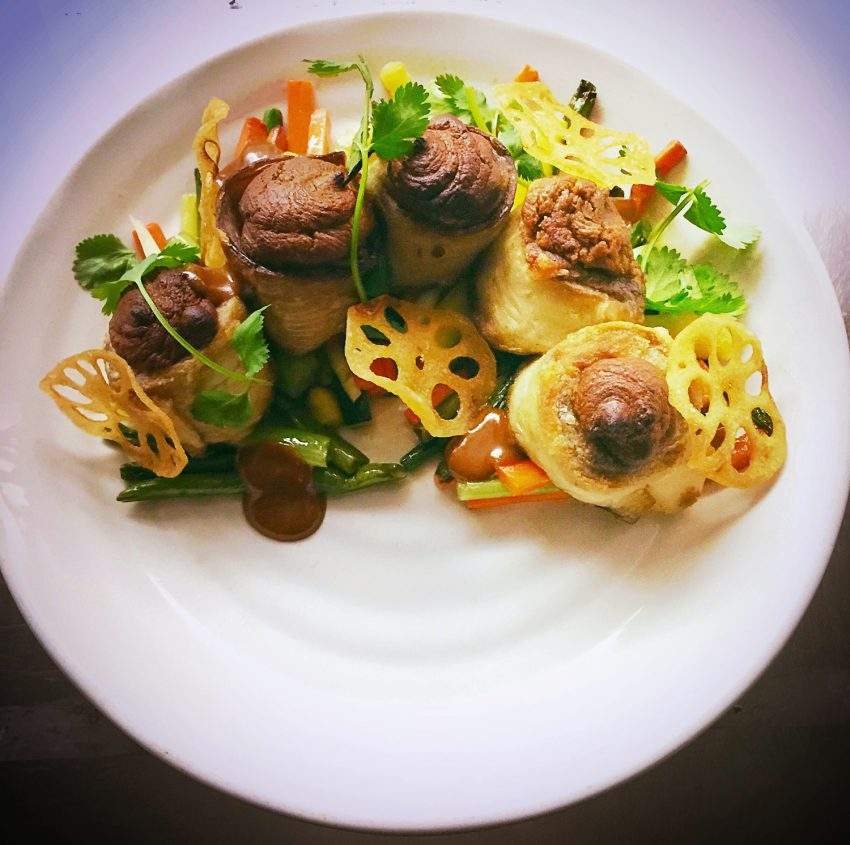
Hong Kong, in and of itself, is a city where many cultures converge. So, when you take that cuisine--already the hybrid of a variety of flavours, ingredients and techniques--and combine that with elements from French cuisine in the hands of a former Top Chef Canada contestant, the result can be spectacular.
So what is Bambudda's executive chef Curtis Luk's (born in Hong Kong and raised in Ontario) approach to creating his own style that's true to his traditions?
How do you retain the essence of Asian cuisine in your food?
Three things I focus on in keeping a Chinese essence to the food are technique, flavours and composition. I keep stocks, doughs, sauces to more Chinese flavouring and method, and in constructing dishes, I like to use more traditional flavour combinations.
What’s your favourite Asian dish?
My favourite Asian dish changes, depending on my mood, but pork belly with preserved mustard greens would be something I never tire of.
What dish do you not mess with?
I don’t mess with Chinese dumplings. I stick to traditional techniques (which are already quite refined), though perhaps I’d play with the fillings a little bit, but not more.
Raw Bar (Calgary, AB)
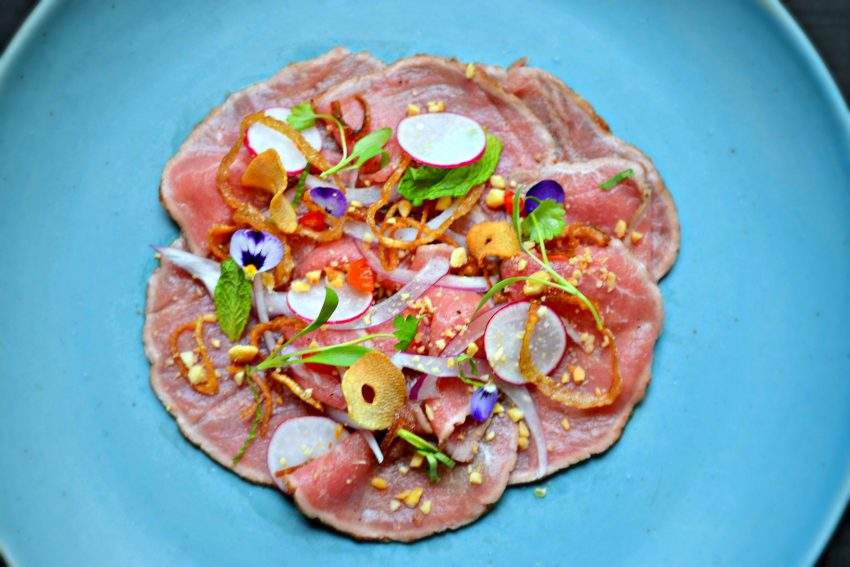
Executive chef Duncan Ly may be a part of Hotel Arts, a boutique hotel in Cowtown, but don't even try to utter "hotel chef" under your breath. His style, modern Vietnamese cuisine with other Asian influences, has taken him to the podium of Gold Medal Plates (or the Canadian Culinary Championships) for Raw Bar, and put him on multiple best-restaurant lists with dishes like beef carpaccio with red onion, Thai basil, chillies, spicy peanuts and yuzu nouc cham, as well as lemongrass roasted duck with tamarind and hoisin jam.
How do you retain the essence of Asian cuisine in your food?
Start at the root. The root has to come from an Asian dish. Take a risotto, which roots are Italian; adding Asian ingredients to it does not make it an Asian dish. It's an Italian dish with Asian flavours.
What’s your favourite Asian dish?
Hot pot. I love that it's meant to be shared and eat communally with friends and family. I also like that you can eat little bit of a bunch of different things.
What dish do you not mess with?
Pho. Don't mess with my pho!
Anju (Calgary, AB)
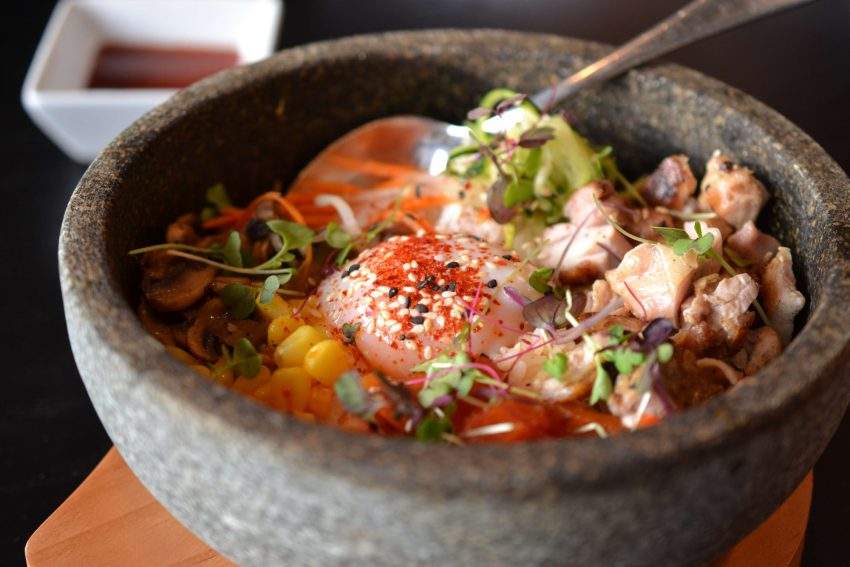
Behind Anju's spiffy interiors, key Korean ingredients and traditional techniques are used on the menu of small plates and large sharing plates, from classics like the dolsot bibimbap (hot stone rice bowl) and budae jigae (Army Stew) to modern favourites like the oxtail tortellini with truffle oil. The name of the restaurant, which refers to food that pairs with alcohol, perfectly captures its spirit of sharing and good times. So how does chef Roy Oh hit all the elements--modern bistro, classic Korean, family style, snacks--with this one outlet?
What is your approach to keeping the essence of Asian foods in the dishes?
To me the essence is flavour and technique, with the focus on flavour, of course. Ingredients are important, too, but I find myself substituting ingredients because of availability and I don't think that takes away the essence of the dish.
What is your favourite Asian dish?
I love so many dishes. I think my all time favourite would be my mom's marinated short rib, with rice and kimchi.
What is one classic you do not want to mess with?
I don't think there is a dish that I wouldn't mess with.
DaiLo (Toronto, ON)

Going strong right out of gate, DaiLo opened in late 2014 and has come to be known as one of the best new restaurants in Toronto. Serving dishes like Big Mac bao (a steamed bun filled with meat and veg that's reminiscent of McD's signature offering), ponzu beef carpaccio, jellyfish slaw and Hakka wontons, executive chef Nick Liu and chef de cuisine Dennis Tay both harvest ideas and inspiration from their Asian roots to deliver bold and edgy combinations.
What is your approach to keeping the essence of Asian foods in the dishes?
N: Knowing the history of that dish and keeping it true to the flavour profile.
D: Start with something very traditional or familiar, but present it in a new approachable, modern way. I often draw from childhood memories because those were always the most impactful to me.
What is your favourite Asian dish?
N: Pho or crab with ginger and scallions.
D: My favorite dish is Kare Kare:Filipino peanut-braised oxtail.
What is one classic you do not want to mess with?
N: My grandparents' Hakka-style wonton.
D: A classic that I don't like messing around with too much is Lechon: whole spit-roasted pig. Keep it old-school and classic!
Chantecler (Toronto, ON)
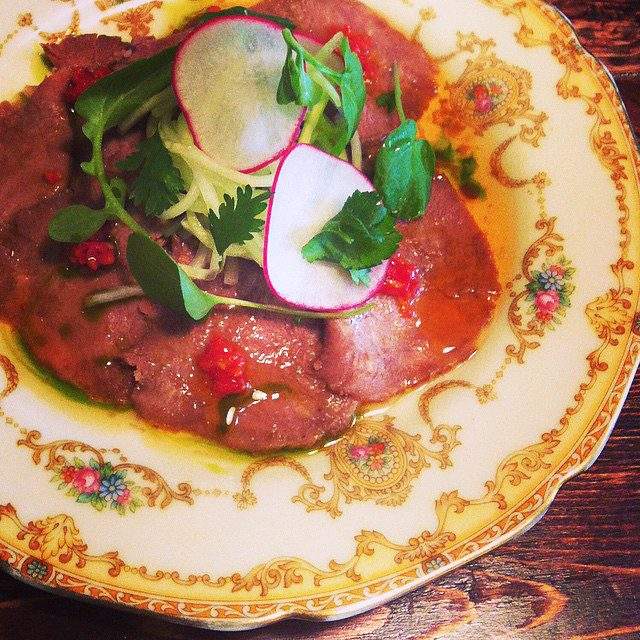
It's rare to see dishes like congee and turnip cake at a place that's not a traditional Chinese dim sum joint or noodle house, but that's the kind of food that Jonathan Poon serves at Chantecler, as well as spicy beef tartare with wasabi and fish sauce, and kale salad with king oyster mushrooms and apple. Clearly, there is not just one way to Asian dishes.
What is your approach to keeping the essence of Asian foods in the dishes?
I am somewhat influenced by Asian food, but not always the ingredient; it's mainly technique, doing things that are not as common in Western cooking. It could be as simple as blanching poultry and letting it dry to get its crispy skin. In a Chinese restaurant, anything that's stir-fried is basically quickly deep-fried, and a lot of deep-fried foods are then done in sauces.
What is your favourite Asian dish?
I like foods done in Chinese home-cooking methods that aren't often done in restaurants. My favourite is steam pork with salted duck egg. I like it when the meat is a little grainy because that's how my grandmother did it.
What is one classic you do not want to mess with?
All of them. I really like Chinese food the way it is, to be honest, i don't tend to try to change it or put my spin on it. If I like the dish, then why would I change the dish? I don't think I can make dishes that have been around for centuries better.
Park Restaurant (Montreal, QC)
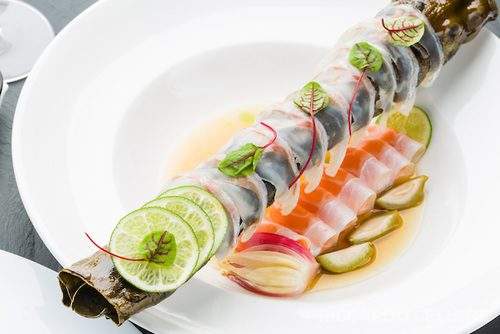
Born to Korean parents, raised in South America, and trained in Japan, Antonio Park is unsurprisingly inspired by and proficient in all these cuisines. Renowned before becoming a judge on the current season of Chopped Canada, Park's restaurant attracts superstar athletes and everyone who enjoys superb Japanese cuisine, with a vast and ever-changing selection of fresh seafood, and those oh-so enticing pictures on his Instagram feed.
What is your approach to keeping the essence of Asian foods in the dishes?
I take the methods that go back to our ancestors--how they pickled, how they cooked--taking that original, traditional cuisine and making it newer and healthier. Take sushi, for example, it's not about creating something new, it's about taking its roots, the rice, doing that right and respecting the rice. We are always in search of perfection. We try to use fresh wasabi instead of cheap powdered wasabi. My approach is about perfecting the traditional sushi as much as you can, like 15 years, and then adding personal twist. We use fresh wasabi from Japan, and the fish we use is sustainable, organic fish from around the world. They're all killed with traditional techniques to retain a natural flavour and texture.
After I perfect the basics, then I can put on my twist, like chimichurri, but not a lot; that's my South American background influence. My kimchi comes from my great grandmother's recipe, done by the book.
What is your favourite Asian dish?
Stew: Korean jigae, not pork bone, but more like oxtail gom tang. You over-braise it so the colour become white. It's one of the things my mom used to make for me all the time. When I don't feel right, that's my go-to soup or meal. I love pho. but it has to be well done. I've had ;at least a million bowls of pho. I'm a broth guy, so every omakase I make starts with a broth.
What is one classic you do not want to mess with?
I don't want to mess with any dish. But, I'll try to perfect classic dishes before anything else and then I'll add my twist.

